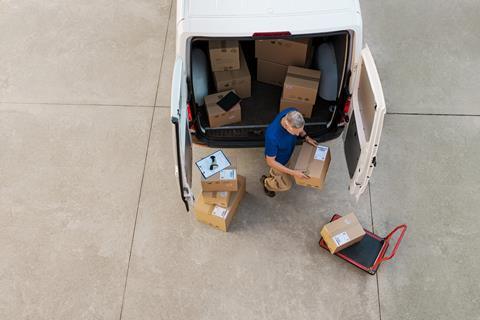Despite online grocery giant Ocado’s imminent fall out of the FTSE 100 and a slump in online sales for the likes of Boohoo and Asos, the retail home delivery market has remained stable, a new report reveals.
The report from delivery expert Parcelhero, analyses online spending patterns over the past decade and reveals that the home deliveries market has now found its post-Covid status quo.
David Jinks, Parcelhero head of consumer research, said: ‘E-tailers who rose to prominence during Covid have faced a shock reckoning in the last couple of years. One moment, High Street stalwarts such as Debenhams, Laura Ashley, Cath Kidston, Burtons and Harveys Furniture were falling into administration faster than you could say ’lockdown’. The next, their online rivals look to be going the same way.”
He added: ”However, reports of the death of e-commerce are greatly exaggerated. For one thing, even post-Covid, High Street retailers can hardly be said to have bounced back to robust full health.
”Since the pandemic, we’ve continued to see the demise of High Street stalwarts such as Wilco and The Body Shop as retailers of all types, whether physical or online, continue to struggle in the face of inflation.
‘Indeed, the UK e-commerce scene is still attractive enough to tempt the likes of the online fast-fashion giant Shein to float on the FTSE100 rather than Wall Street. Last year, Shein reportedly sold $45bn (£35bn) of clothing for a $2bn (£1.57bn) profit. That’s proof positive that e-commerce still has a huge role to play in global retail.
Jinks said Parcelhero’s research into recent retail patterns has found that what appears to have been a turbulent ride for e-tailers has, in fact, been notably stable for some time.
Jinks said: ”In pre-Covid January 2018, e-commerce only took 16.9% of overall retail sales in the UK. Flash forward to February 2021, when lockdowns were hammering the High Street, investors couldn’t hurl money at e-commerce unicorns fast enough and online snaffled 37.3% of all retail trade.
‘However, from that giddy height, online then fell back to 26.3% of the entire retail spend by March 2022. That was quite a fall from grace, but that’s when the crash ended.
”It’s important to realise that, since then, e-commerce’s share of the overall retail market has been remarkably stable. For over two years, we have seen it bob between a low of 25.6% and a high of 27.5% with the majority of months around 26%.
‘That key figure of e-commerce accounting for 26% of all retail spending should give realistic tech and online companies a firm number to work on, in terms of their future plans and valuations.
Jinks cautioned that some online retailers were not yet out of the woods. He said: ”Of course, we will continue to see some overstretched online companies fail and struggling physical stores crumble as the new equilibrium settles down, but the earthquake is over.
‘It will be those retailers with strong in-store and online sales that will ultimately triumph in a post-Covid world.
Parcelhero’s report “2030: Death of the High Street” which has been discussed in Parliament, reveals that retailers must develop an omnichannel approach, embracing both online and physical store sales.
The full report can be read here: https://www.parcelhero.com/content/downloads/pdfs/high-street/deathofthehighstreetreport.pdf














![Hooper Haulage[80996]](https://d2cohhpa0jt4tw.cloudfront.net/Pictures/100x67/5/6/1/19561_hooperhaulage80996_229121_crop.jpg)



